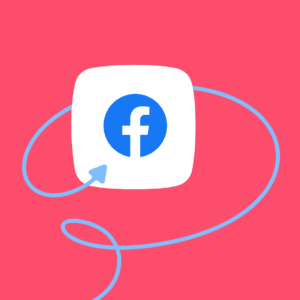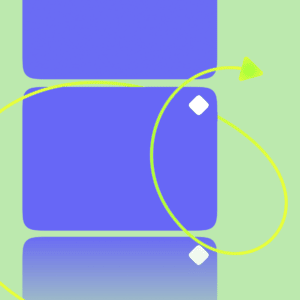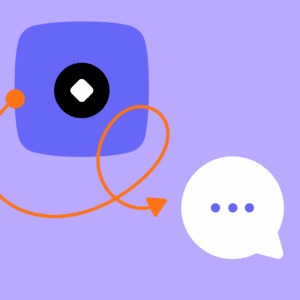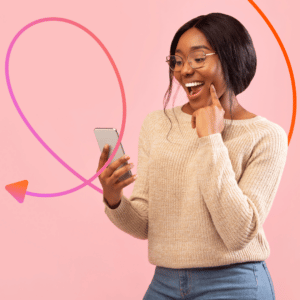[Webinar] How to Scale Your Marketing Efforts in the Midst of Facebook Changes
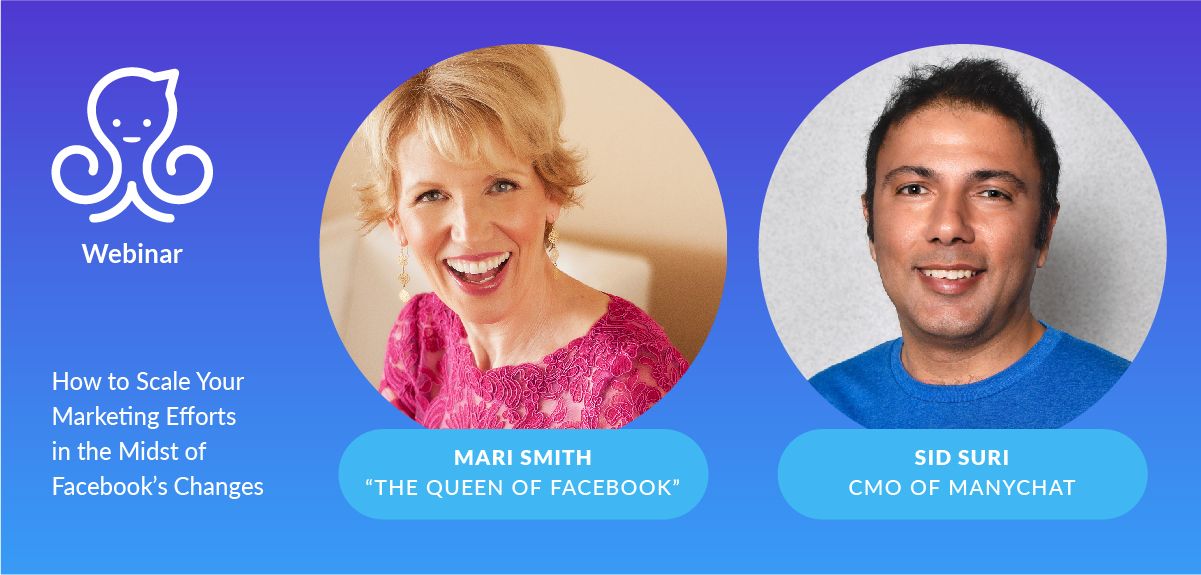
Written by Fara Rosenzweig
August 22, 2019
You’ve heard of the Facebook updates, so now it’s time to restructure your strategy to scale your marketing efforts.
What do all the changes mean as a marketer? The key is to understand the best way to reach your customers through Messenger, as well as other marketing channels. How can you deliver value to the customer, and what’s the best medium for them to digest content?
Mari Smith, Queen of Facebook, breaks down the Facebook changes and makes them easy to apply to help scale your marketing efforts.
In this webinar, you’ll learn:
- The importance of Instagram and Facebook stories
- Facebook and Instagram ads
- Navigating through the feed format
- Subscription messaging changes
- 24 + 1 rule
- Multi-channel marketing
- Future of Facebook and other apps
Watch the full presentation.
Want to learn more? Register for Conversations 2019.
Show Notes
Mari Smith: Literally, in the last eight months or so the news feed has been going away. And I have seen both Facebook and Instagram test this combination of a news feed and stories. So you know how we navigate our phones vertically up and down, but then stories are horizontal, back and forth, you tap and swipe? And so that’s apparently, we’ll seem like I say they did these little tests. But you know, again, as a marketer, we need to be concerned about how consumers consume content. If you are not yet embracing the stories format on Instagram and or Facebook, you really need to get into that and if you don’t want to do organic, that’s fine, but at least get into doing some ads and if you’re using automatic placement on the ads manager anyway, then you are already doing stories ads.
Another change is the business manager. They’re really becoming more complex. If you haven’t seen this yet, it’s at the top of your Facebook page, probably just above your wall or like where your posts are. But Facebook’s asking you, can we auto-optimize your ads for you? So you’ve probably seen this where it says get started with automated ads.
But my one major tip for you right there is I would recommend that you build stories natively, ads natively, they’re full screen. They’re 9×16 videos and photos, they just look more native if you want to.
If you click into that, then you’ll see Facebook wants to use their machine learning to save time, less maintenance. Well, that’s there for you to try if you’re really new with ads. Get started. I’m going to talk a bit more about ads. It’s really important.
Another change, simplifying the feed format. I thought I’d just pop this in here because this is literally happening as of August 19. So what’s happening is on the left here, whereas both organic and paid, okay, so your regular post and your ads. This is called a 2×3 and these are screenshots from mobile. Previously you had a 2×3 aspect ratio and seven lines of primary text. As of August 19, on the right, you’re going to have only three lines of primary text and then the 4×5 aspect ratio, which is good for both images and videos. That’s coming in a couple of days.
Under the topic of Facebook changes, this is really big. Anybody who’s a ManyChat customer or you’re thinking about using a chatbot, this is definitely impacting you. Subscription messaging changes. What that means is as of July 31, which was just the other week, what Facebook made pages do, and this is to prevent too much over usage of promotional content going out on your page, is that as of that date, pages had to get permission at the page level.
All you do is go into your settings up at the top right, if you can see my cursor, and then go to click on Messenger platform over on the left, and then on the next, when you’re on Messenger platform, you’ll see this little circle right here it says request, you’re going to request permission to be able to send your Messenger business contacts, broadcasts or non-promotional.
Sid Suri: When Mark Zuckerberg announced that a future of Facebook is messaging, it was an amazing and powerful thing to hear. But at the same time, it means that Messenger is going to evolve, Messenger is going to grow up a little bit and become hopefully a richer, more powerful platform to reach all of your customers. As part of that transition, they’ve really sort of clamped down on who can send non-promotional messages outside of the first 24 hours. What that means is that in the first 24 hours, everybody can do whatever they want. But after 24 hours, only certain people who qualify for certain criteria can send those messages.
If you don’t qualify, and some of you do and carry on, for those of you who don’t I know a lot of people have been very concerned is you have to figure out, who am I targeting? How am I reaching them and closing that deal or getting that lead or getting that email or whatever it is your business needs to do in the first 24 hours? And how do we do that? We do that with rich interactive experiences.
We all have to step up and be smarter marketers, have a quiz, have a spinning wheel, have a contest, have a giveaway, have a fun engaging image or GIF or emojis. Make sure you’re really grabbing that customer’s attention in that first 24 hours where you have free rein to do whatever you want.
Over the years as a marketer, if you’ve got in one size fits all message, you’re doing something wrong. You have to target customers.
You have to have engaging content and then think multi-channel, right like Messenger is great for interactive experiences, it’s great for personalization, it’s great for rich content. As a head of marketing for Messenger, I’m not gonna sit here and tell you Messenger solve every problem. And you have to think multi-channel. And sometimes that means, grab their email, you want to send them a newsletter about your restaurant, wrap their email, messenger might not be the best use case for that. You want to send somebody a promotion in six months uses sponsored messages, it’s a great vehicle to reach your subscribers.
SMS is gaining momentum. You want to remind somebody about a webinar like what we’re doing an hour before, you use SMS. You get those dentist appointment things all the time. I’m not going to sit here and tell you that you know, Messenger is the only strategy but it is a powerful strategy and you want to use it smartly, target-rich content, and then you use it in conjunction with all your other channels to create like, this amazing journey and experience for your customers.
Change is the norm. Change is going to happen and I would be lying if I said the change of the last six months is the only one you’ll experience. Facebook is changing every day they’re growing, what works for a platform at 100 million users might not going to work in a billion.
Mari Smith: The last thing Facebook wants is for marketers to come in there and turn people off of using Messenger so it’s a fine line between managing the relationship between businesses and consumers and the regular everyday users which we all are as well.
Just a few months ago as of January 2019, earlier this year, check this out 96% of Facebook users are using on their smartphones. If you’re at your desk, you’re only in 25%. We really have to think as marketers mobile-first.
Another stat, this is from a couple of years ago, but I just want to point out in case you haven’t seen this, the orange line is the four big messaging apps, which is WhatsApp, Messenger, WeChat, and then Viber. And then the black line is that’s the four big social networks Facebook, Instagram, Twitter, and LinkedIn. You can see this graph point was like five years ago, that’s 2014 that more people are using messaging apps than social networks. That doesn’t mean social networks are going to go away and we should forget social networks. You want to do both.
Another big tip I have for you is that if you post once a day on your Facebook wall, organic can be scheduled, focus on visual and video. So images and videos should be number one.
And if you’re religious about posting once a day for 30 days straight, what happens is the Facebook algorithms go ‘Aha’, we’ve got a page here, that’s consistent we’ll turn up their organic reach. There’s a good chance that you will see a difference in your reach. I recommend a ratio of 70% video and 30% photo sometimes I say 20% photos and only 10% links. Definitely embrace Facebook Live.
Facebook really wants us to use Live regularly. You get six times the engagement than regular uploaded videos. The steps to success and I recommend what I call my Mari method. I’m going to go into this in quite a bit more detail when I come to speak at the Conversations conference in a few weeks in Austin.
Another thing you can do Live is a watch party. We have folks here from Australia it’s 2 AM for them and that’s awesome. And at the same time that you could do a Live on your page, and then you can circle back and maybe do a watch party a different time the next day, or do a watch party to go deeper with discussion inside of a group, great things you can do there.
Also with the call-to-action being click-to-messenger, hook people into your Messenger bot. I wanted to put this in here for you all to understand this is from Facebook directly. That this is web-generated leads, but they found that a lead that was contacted five minutes after submission is 21 times more likely to turn into a qualified lead than if they’re contacted 30 minutes. The beautiful thing about chatbot is you are contacting them instantly. And we live in an instant-gratification society, we do all over the world. It’s like I press that button I want the response now. And so that’s the beautiful thing that a chatbot can do for you.
Email is the same, SMS that you send something in and immediately they get a response back. So anything you can do to add that automation component to help people get a faster response. Retargeting for those of you tuning in maybe not fully familiar what exactly does retargeting or remarketing, the same thing as a diagram here by a good friend Neil Patel who’s also speaking at conversations conference. Let’s say someone comes to your website, they visit your website they’re checking things out. Maybe they don’t make a purchase yet; they don’t even sign up. Well, let’s say they just got distracted or they have to think about I’d have to talk to their spouse or something. I checked their resources.
They check your website up but they don’t take the action you want them to they go off and now they’re surfing Facebook. They just saw your ad. Here’s a quick example. Drip is e-commerce, CRM, customer relationship management. And this is a brilliant strategy, you guys could emulate this. What you do is you have a list of your LTV, Lifetime Value Customers, so that you’ve got your database segmented. You upload that to Facebook, it’s all encrypted, and then you say to Facebook, find me more people like that. That’s called a lookalike audience brilliant way to grow your business.
One more thing. What the heck is Facebook’s future? Well, as I said earlier in my title slide, we have to sync family of apps. Not just Facebook, so don’t get all upset. What’s interesting is that Facebook started combining about a year ago is 2.7 billion active users across all of their four main apps.
And Facebook still has the bulk of that. We’ve got to really keep our eyes definitely on Instagram, Messenger, and WhatsApp. So as we’ve been talking about throughout this presentation today, Zuckerberg is on this mission, the future is private. There’s a variety of reasons why he’s doing that. I’m going to talk about that in my keynote at the Conversations conference.
And if you haven’t registered for Conversations 2019, do so before prices go up! Reserve your spot.
We’ll see you LIVE! #Conversations2019
Learn more about our other Conversations 2019 Speakers:
- Randi Zuckerberg
- Neil Patel
- Manuel Suarez
- Mackensie Liberman
- Jason Swenk
- Philippe LeCoutre & David Sambor

